Adventurous Kate contains affiliate links. If you make a purchase through these links, I will earn a commission at no extra cost to you. Thanks!
Staying at Ecocamp Patagonia was the biggest highlight of my monthlong honeymoon in Chile, Argentina, and Uruguay. I completely adored this place, and it made my time in Chilean Patagonia incredibly memorable.
Ecocamp Patagonia is home to the world’s first geodesic hotel room. That’s right, they were first — and we can thank their influence for the hundreds of dome hotels that have sprung up all over the world!
But more than anything, Ecocamp is a sustainable resort that actually walks the walk. Carbon neutral, using smart green technology, and dedicated to serving the local community.
One of my readers recommended Ecocamp Patagonia to me after loving her stay, and when I got in touch with Ecocamp’s staff, we decided to work together. Altogether, Ecocamp offered me and Charlie three comped nights in exchange for some coverage; we paid for a fourth night out of pocket.
Let’s take a look at this truly wonderful place.
This post was published in February 2024, based on a December 2023 stay.
Table of Contents
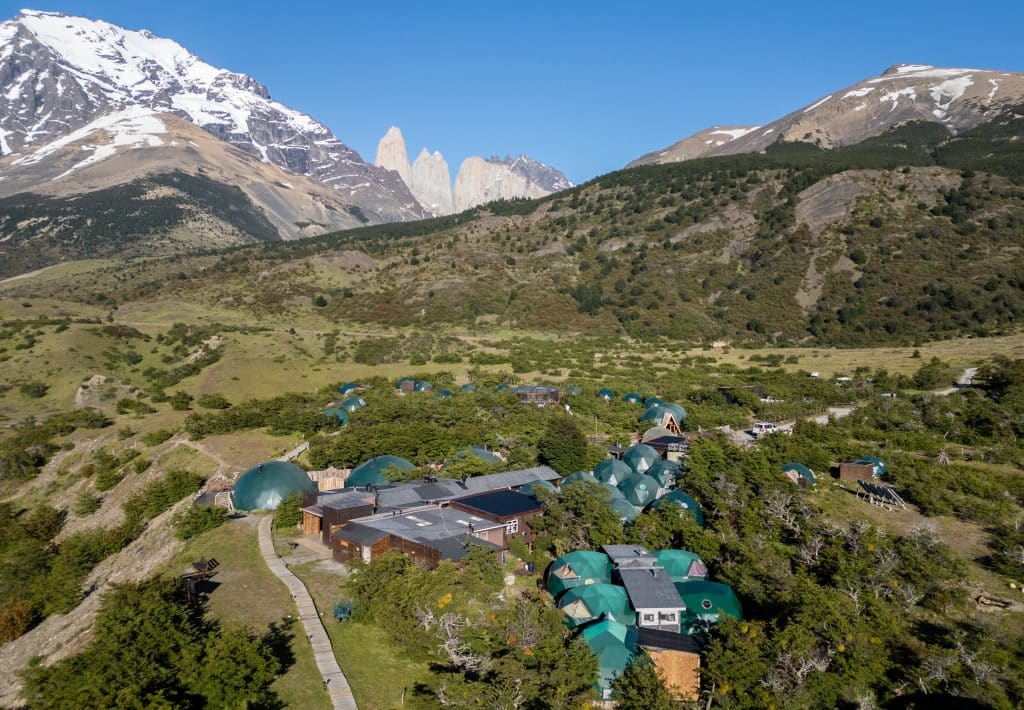
Ecocamp Patagonia
Ecocamp Patagonia is located close to the heart of Torres del Paine National Park in Chile. It’s so close, you can hike directly from Ecocamp to the base of the towers, which I did one day! (More on that below.)
And the entire place is composed of geodesic domes: private domes for sleeping, community domes that house the dining and bar areas, a yoga dome, a massage dome, and all the domes where the staff live!
Ecocamp walks the walk when it comes to sustainability, much more than most sustainable accommodation I’ve visited, and they are committed to minimizing their environmental impact.
What does that mean? Ecocamp has been carbon neutral since 2007 and runs on renewable energy generated by solar panels and micro-hydro turbines from a nearby river.
Other sustainable practices include using composting toilets and a biofiltration system to help replenish the soil; offering only biodegradable soap and shampoo; and heating the domes through sun-exposed ceiling windows.
And then there’s Ecocamp’s social commitment: they’re dedicated to sourcing local produce, buying from their neighbors whenever possible, and financially contributing to the preservation of Torres del Paine National Park.
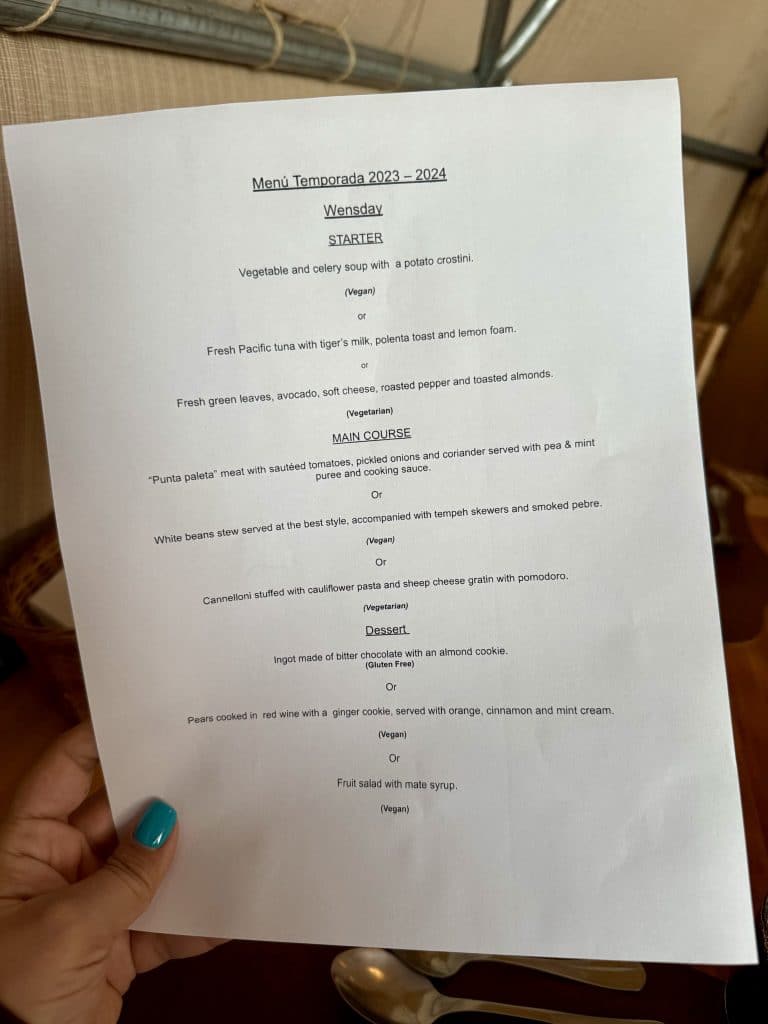
If you are vegetarian or vegan, YOU WILL LOVE THIS PLACE. Every night, there are three-course meals, and each course has three options, including at least one vegetarian and at least one vegan. And the lunch buffet is entirely vegetarian. I met lots of vegetarians who chose Ecocamp for this reason.
Additionally, Ecocamp is a digital detox. There is no wifi and no phone signal, though there is a computer with wired-in internet if you need it.
(However, I should point out that wired-in internet isn’t practical nowadays — you can’t sign into most email providers anymore without two-factor authentication, and if there’s no wifi, you can’t confirm on your phone that you signed into an unfamiliar laptop.)
Ecocamp can only be booked through Cascada Travel, and you can book here. It’s a bit confusing, but the package I did and recommend is Patagonia Wildlife Safari — a customizable itinerary of 4-7 days with daily excursions.
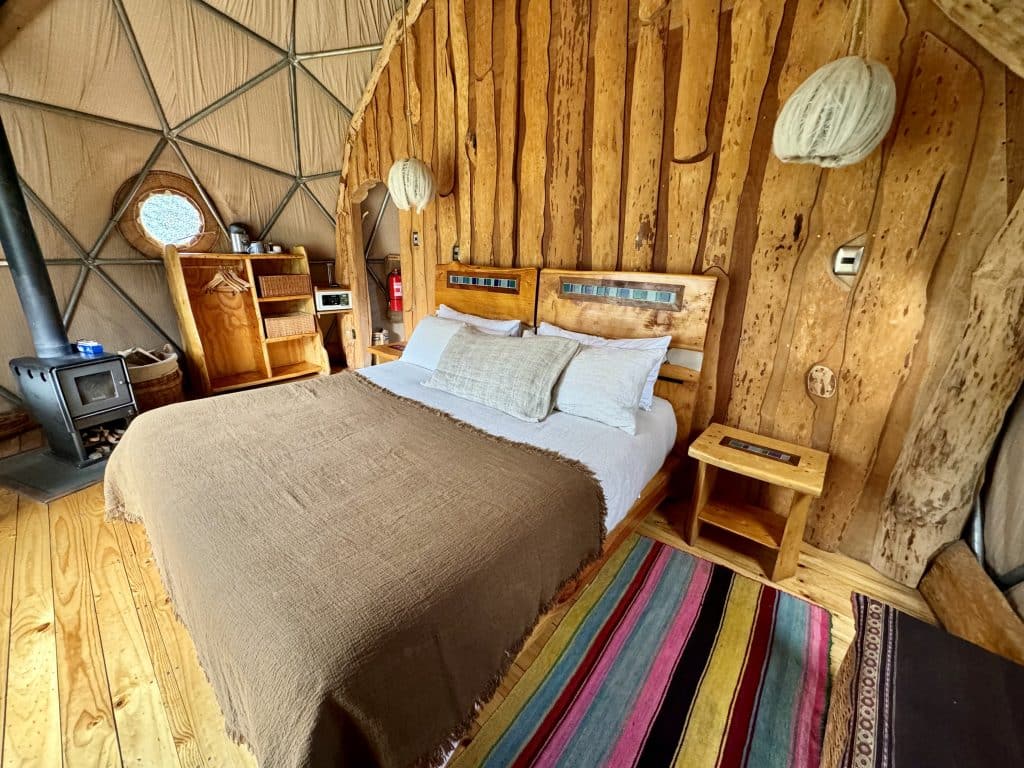
Domes at Ecocamp Patagonia
In the resort that pioneered dome accommodation, of course you’ll be staying in a dome! There are three kinds of domes to choose from: standard dome, superior dome, or suite dome.
Standard domes are the basic option, with beds but no bathroom (there is a shared bathroom), no electrical outlets, and no heat, but lots of blankets that will keep you warm all night.
Superior domes have an ensuite bathroom with a shower, sink, and a composting toilet, as well as electrical outlets and a propane heater to stay toasty at night.
Suite domes are top tier, including an ensuite bathroom and modern low-emission wood stove, local decorations, and even more space. Some suite domes are loft domes, which can sleep four people and are ideal for families.
Charlie and I stayed in a suite dome. Here’s a look at it:
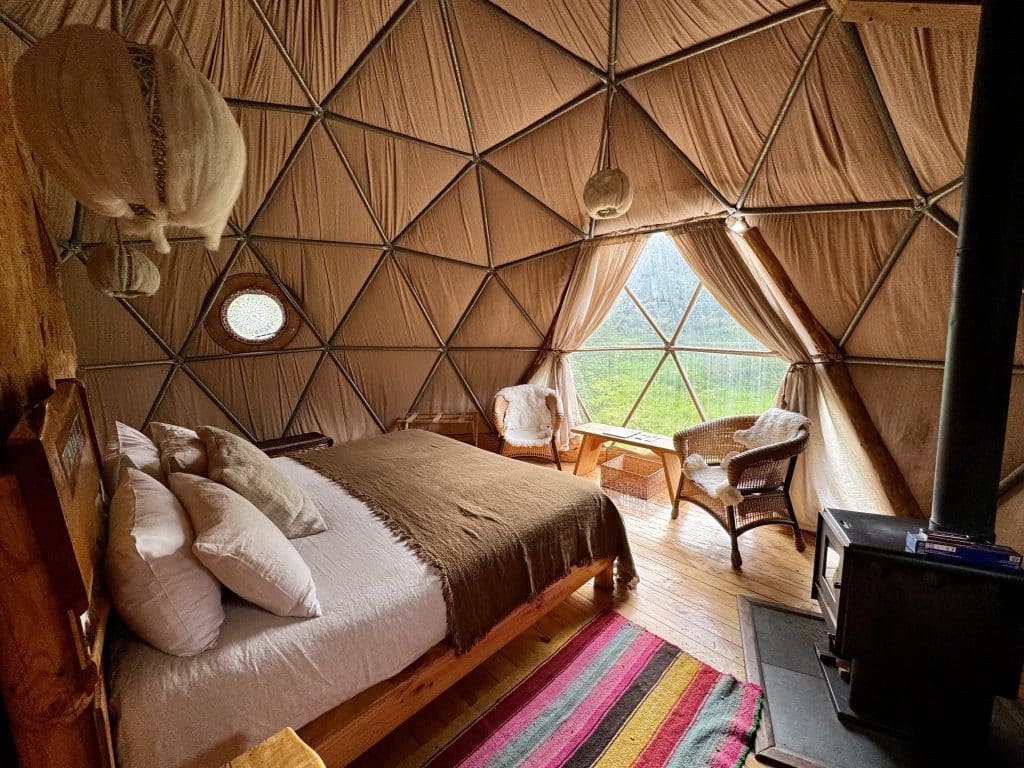
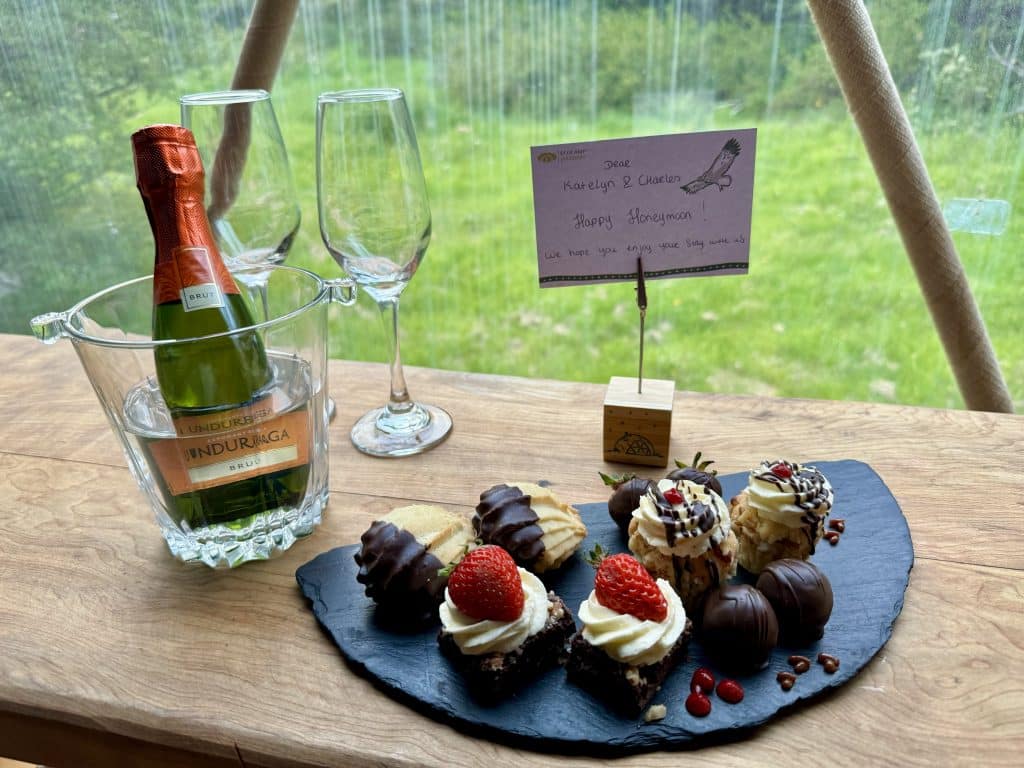
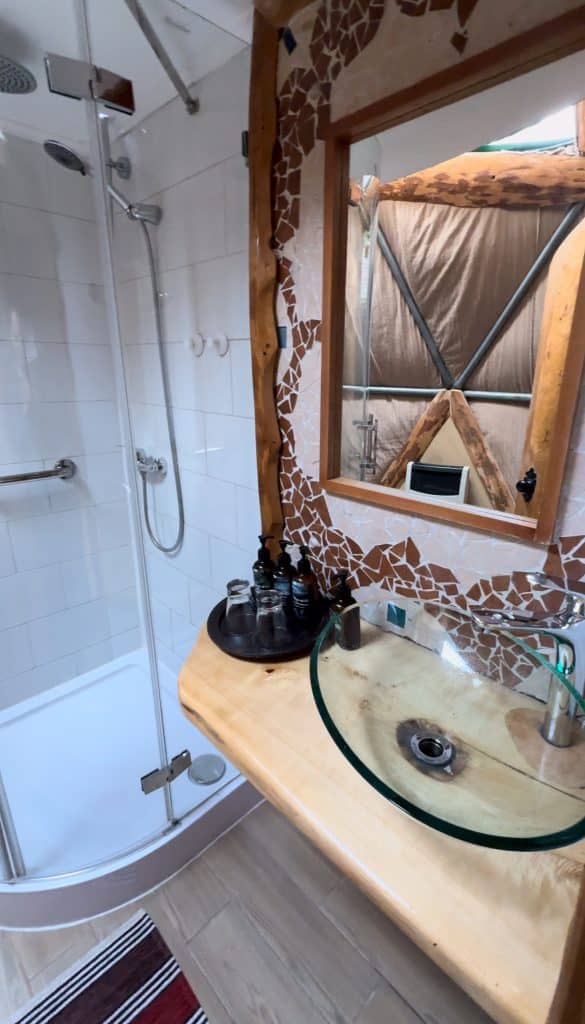
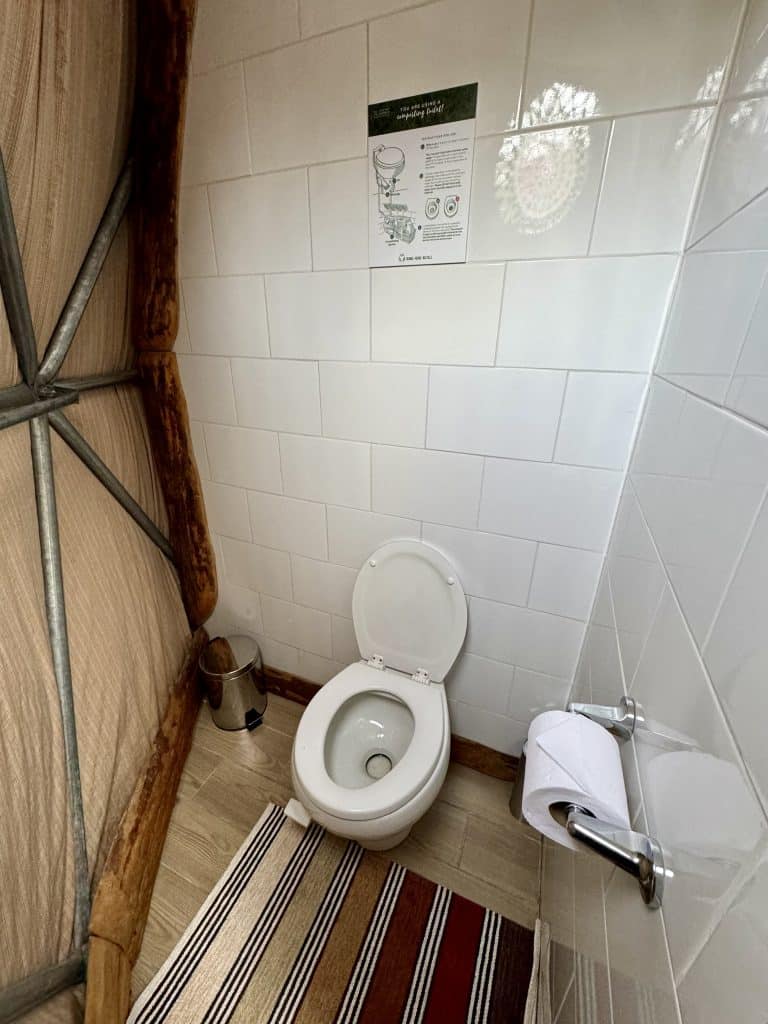
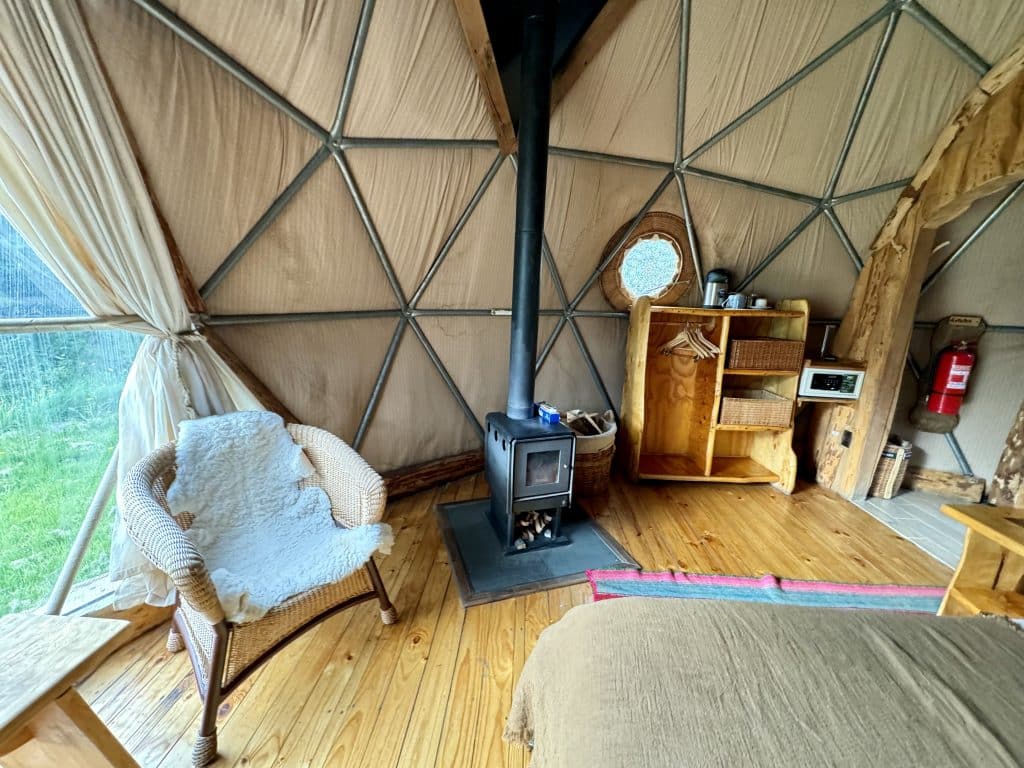
I was impressed by the abundant hot water and good water pressure in the shower, and the composting toilet was easy to use (though you do need to keep reminding yourself not to throw toilet paper in it!).
Every night when we came back from dinner, there was a fire burning in the wood stove. So cozy — but at times a little too warm! By the third night, we finally timed it right, keeping the windows open until we went to sleep.
One drawback: There was a LOT of light in the morning from the side windows, which had no curtains. We visited in early December, when the sun rises at 5:30 AM (thank you, southern hemisphere). I used a sleep mask and recommend you bring one of your own.
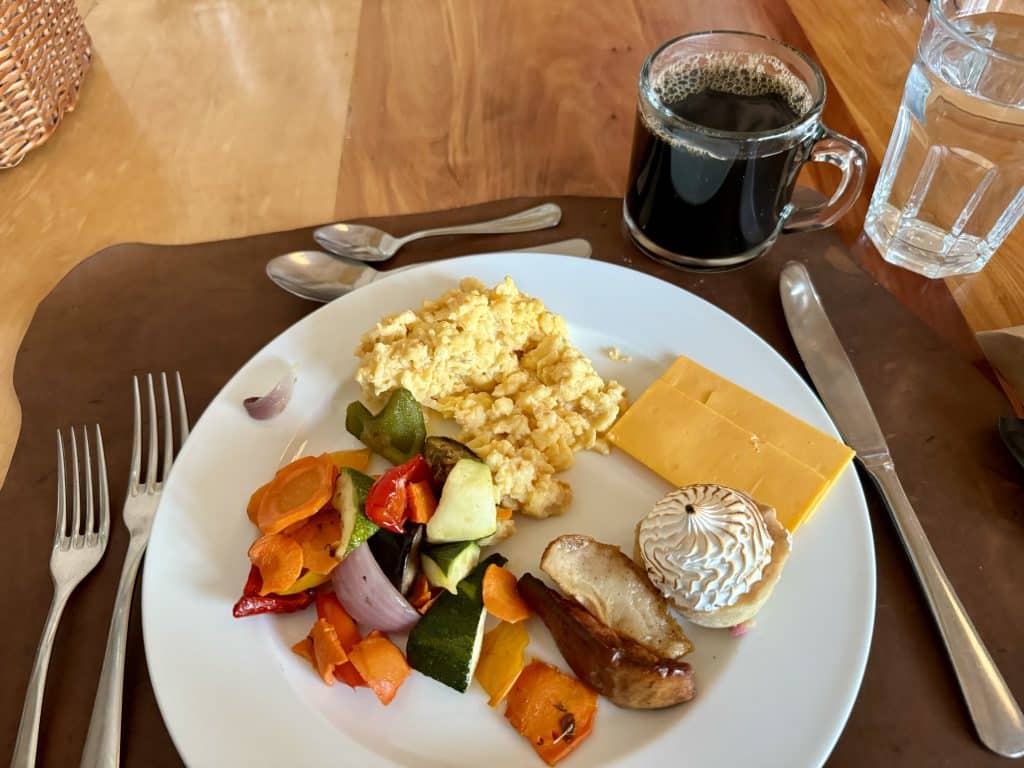
A Typical Day at Ecocamp Patagonia
Your day begins with a hearty breakfast, and you’ll receive your breakfast time the night before based on the excursion you’ve chosen. Most people eat around 8:00 AM. And if you’d like, there’s an early yoga class you can join.
After breakfast, you pack your lunch for the day. You’re given a reusable container to fill from the entirely vegetarian lunch buffet — pastas, rice, quinoa patties, chickpeas and all kinds of beans, eggs, cheeses (including vegan cheeses), breads, and vegetables.
Also during breakfast, you make your selections from the three-course dinner menu for that evening.
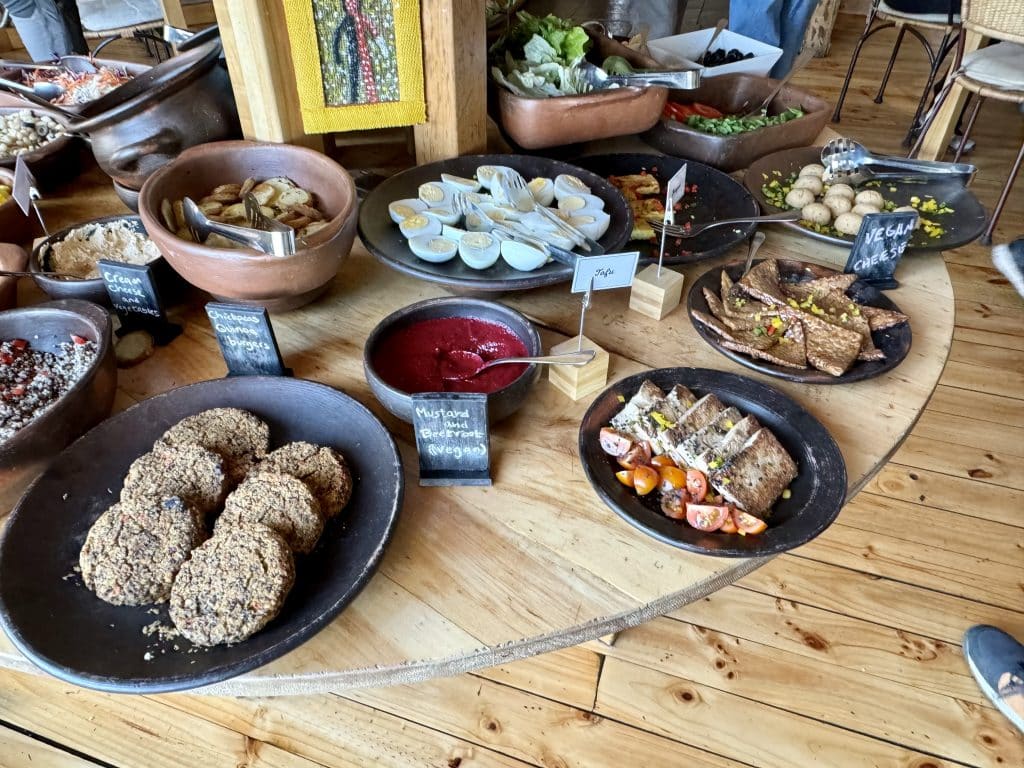
And then it’s time to head off on your excursion! You might be hiking, tracking wildlife, or on a boat trip. More on the three excursions I did below.
After you return from your excursion, you might have time for a massage (which I recommend booking in advance — slots go quickly!). There is also a daily eco-tour where you can learn about how the resort operates behind the scenes and see their green technology.
Just before dinner, it’s time for your daily briefing! Your excursion leaders will tell you what time to meet in the community dome, and they’ll go over the three excursions available for the following day. You’ll choose tomorrow’s excursion at this time.
This also doubles as happy hour! You’ll get to enjoy a cocktail (Pisco sour or calafate sour!) and some nibbles.
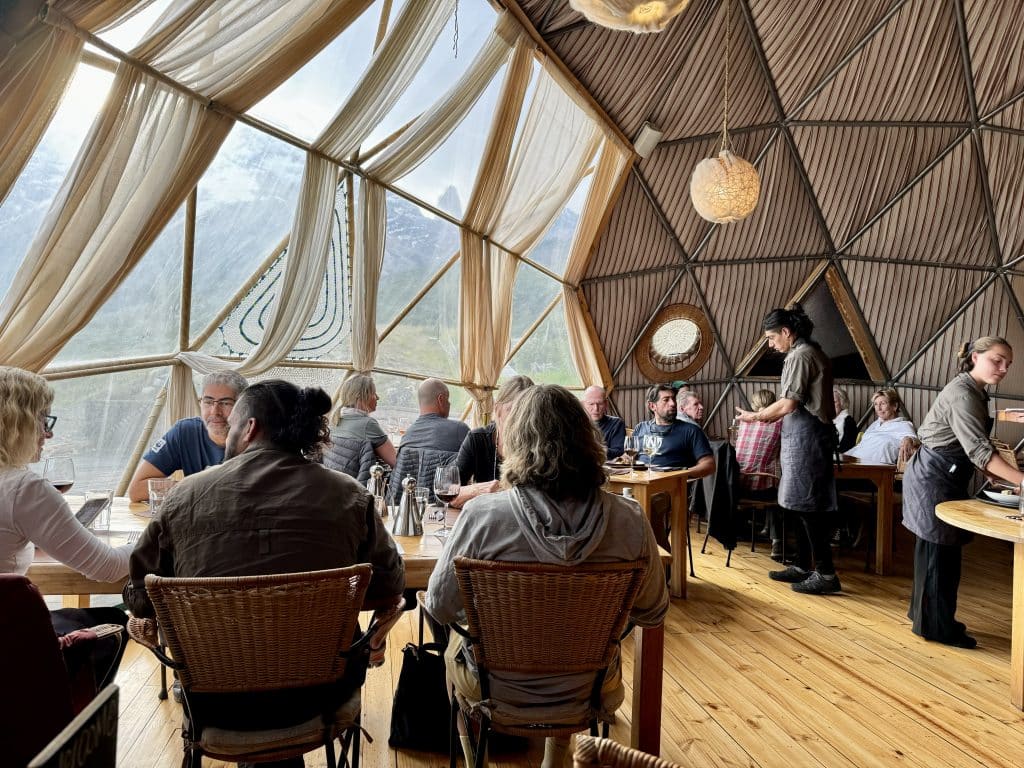
Then it’s time for dinner. The nice thing is that you’ll be sitting with your companions from the excursion that day — so you’ve already gotten to know each other a bit (and definitely have stuff to talk about).
The dinner is three courses with three options for each course (including at least one vegetarian option and at least one vegan option for each course), and wine is served.
And then it’s time to head back to your dome for the night. If you’re staying in a suite dome like we did, you’ll come home to a fire in the wood stove. And the it’s off to bed, because your body needs rest after a day in the great outdoors!
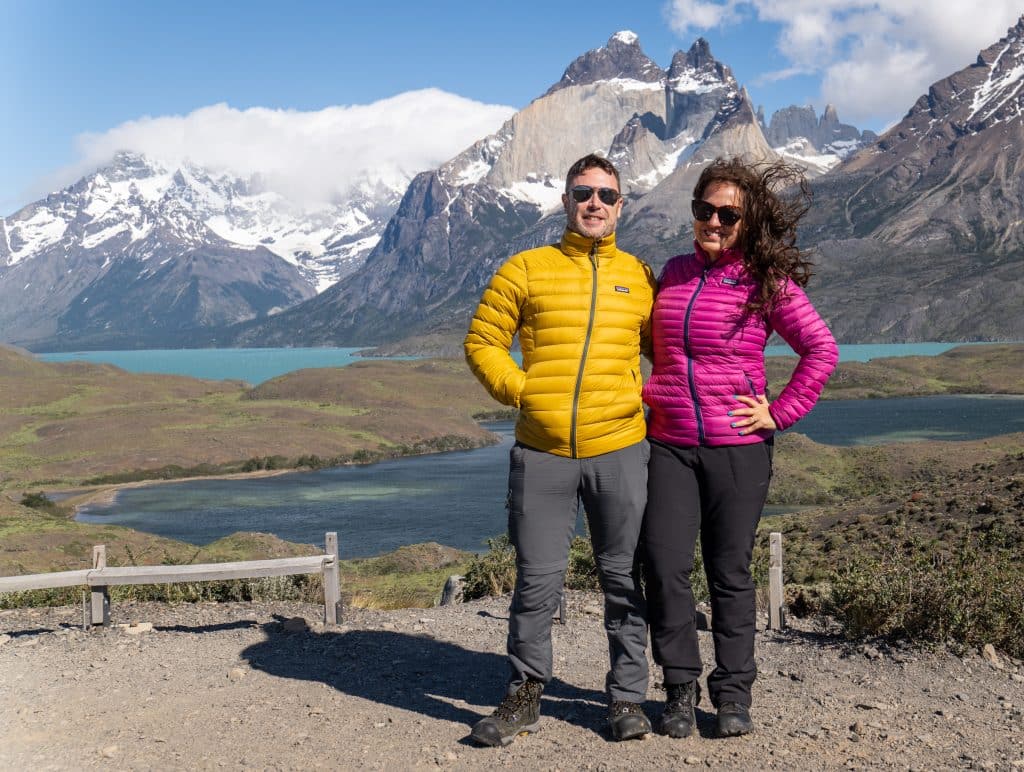
Excursions at Ecocamp Patagonia
I was at Ecocamp Patagonia for four nights and three full days, which was the perfect amount of time to try out a few different excursions.
Each day has three excursion options, and there is always one easy excursion available.
My three excursions were: Lake Grey and Grey Glacier boat trip, hiking to the Base of the Towers, and the Fauna Trail.
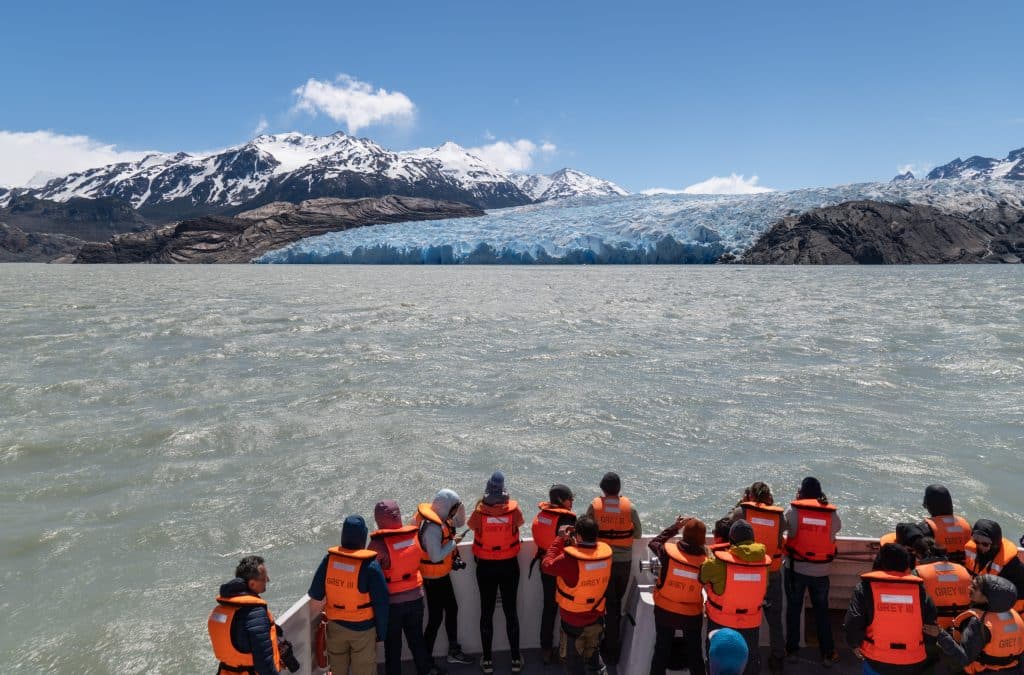
Lake Grey and Grey Glacier Boat Trip
This was classified as an “easy” excursion at Ecocamp. We began our day with a two-hour drive to Lake Grey, stopping for photos at a few scenic viewpoints along the western lakes, then stopping at a hotel for a coffee while the guides got our tickets. (And…the hotel gives you 30 minutes of free wifi. FYI!)
We then set off for the boat on a long walk across a gravelly gray beach. We were lucky to see an enormous blue and white iceberg in the water, which had broken off the glacier earlier.
From there, we hopped on the boat to begin the Lake Grey navigation, ate our box lunches, and enjoyed a complimentary cocktail.
Along the way we picked up hikers doing the W Trek — this boat trip doubles as local transportation — and we sailed right up to the glacier. I’ve never been so close to calving ice before! We even got to see some pretty waterfalls.
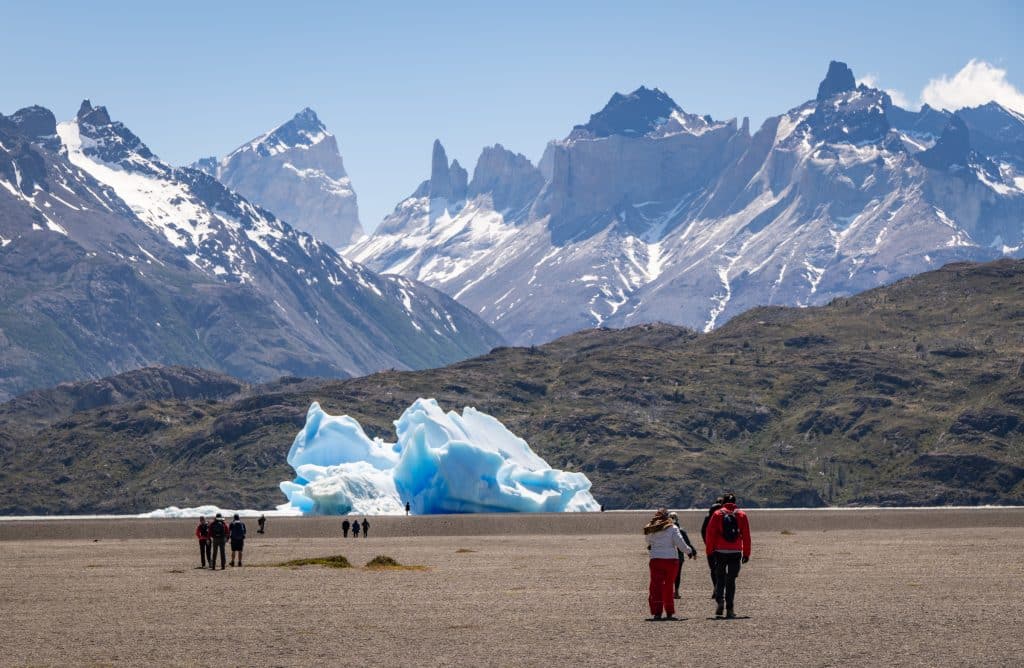
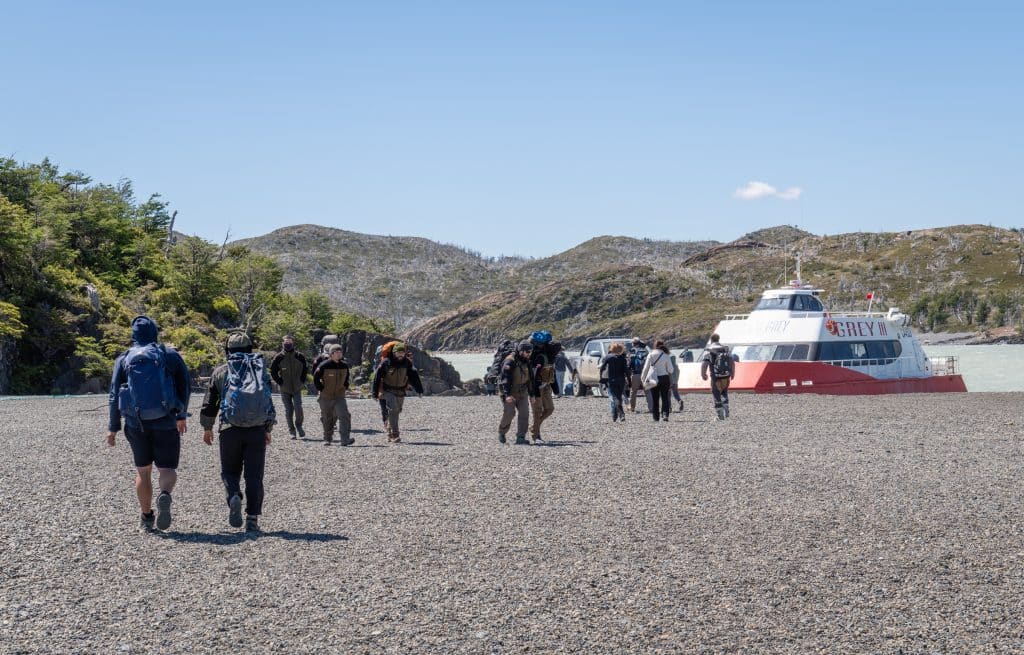
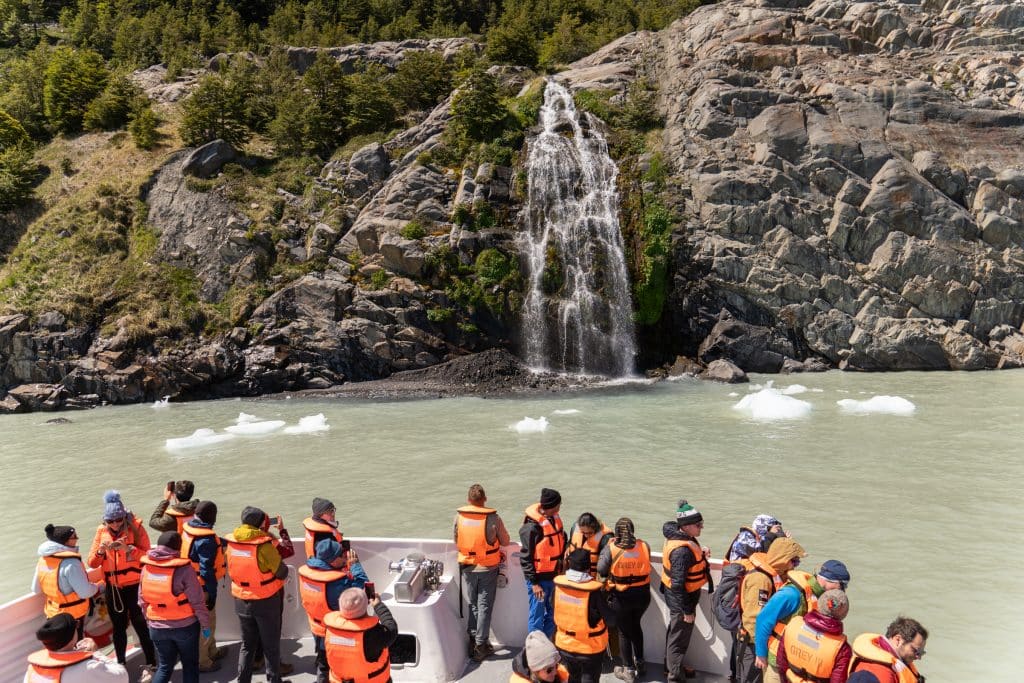
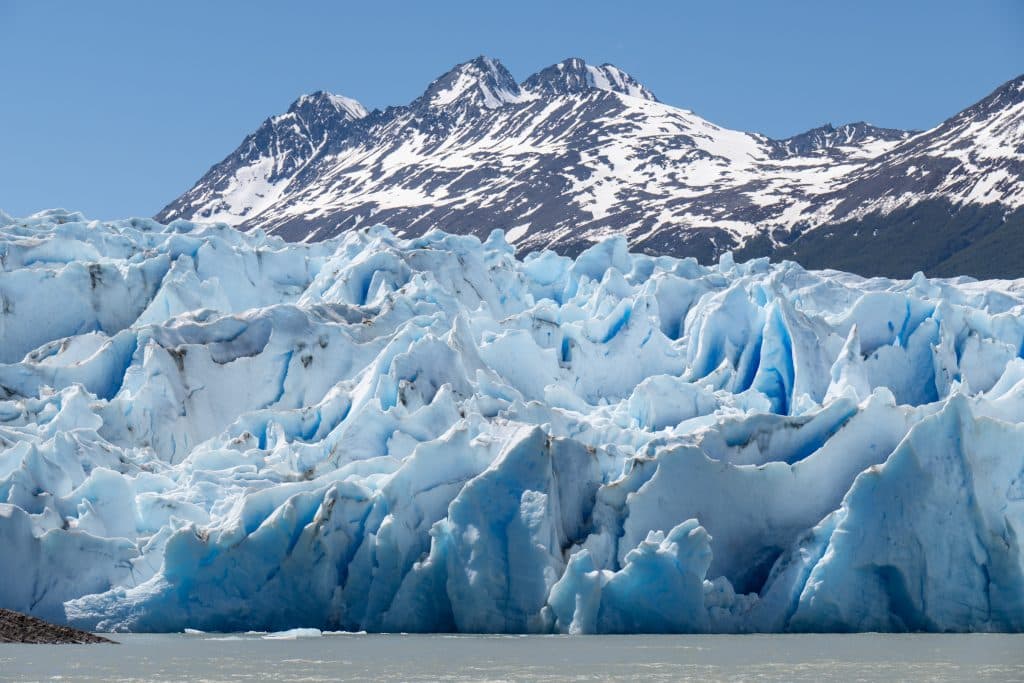
This excursion was a really nice introduction to Patagonia, and though it was an easy excursion, there was a surprisingly long walk across that huge gray beach!
Is the Lake Grey excursion worth it? I think it is, for most people. However, I should point out that this glacier doesn’t compare to Perito Moreno Glacier in nearby El Calafate, Argentina. That enormous glacier is far more impressive.
That, and earlier this year I visited Eqi Glacier in Greenland by boat, which was far more striking — though I’m going to guess than 99.9% of visitors to Patagonia don’t visit Greenland earlier in the year!
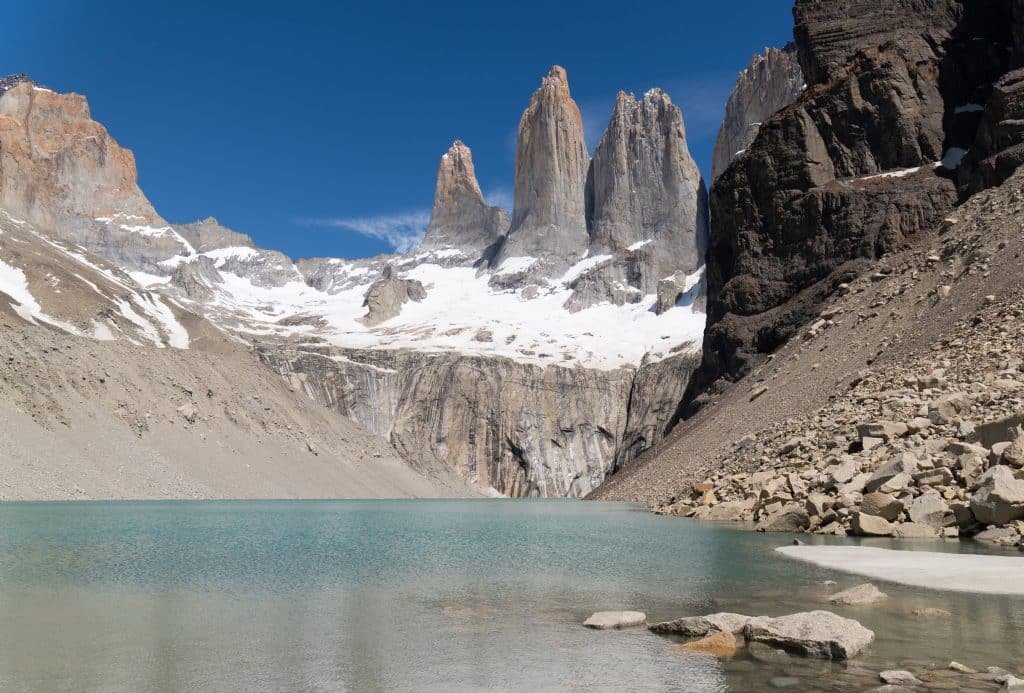
Hike to the Base of the Towers
Hiking to the base of Las Torres is the most difficult excursion that Ecocamp offers. The hike takes 8-10 hours, it’s a 22 km hike out and back (13.6 miles), and has 1200 meters elevation gain (4000 feet). Additionally, there’s no easy way out — you need to hike out the exact way you hiked in.
Even so, Charlie and I knew we wanted to do it. That photo of the tower base, the blue lake in front of the three jagged rock formations, is the ultimate Patagonia souvenir.
And man, this hike was TOUGH. There are so many different stages.
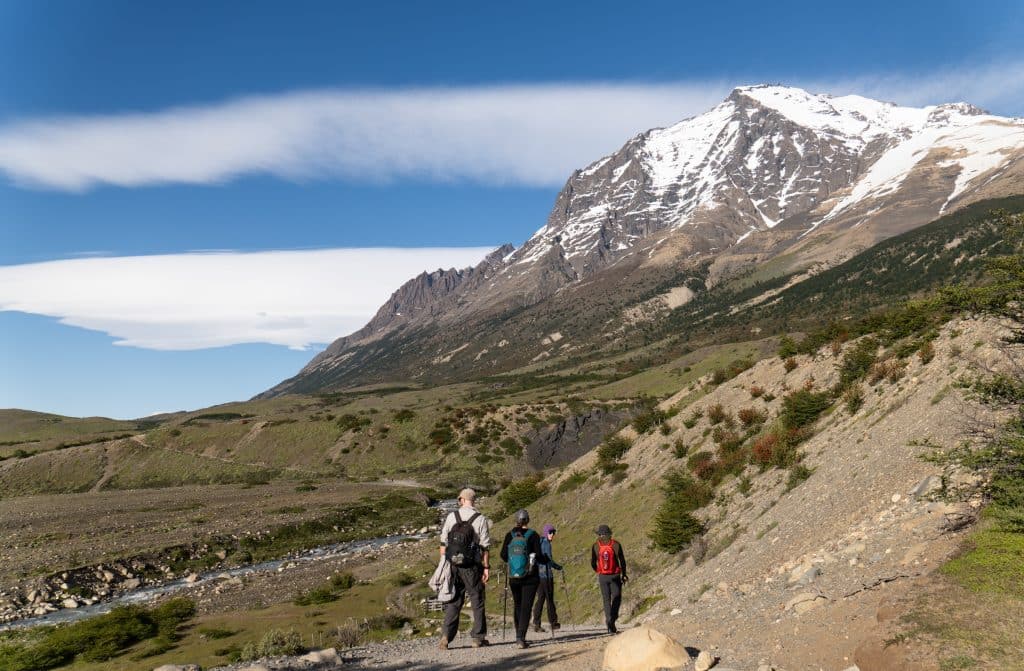
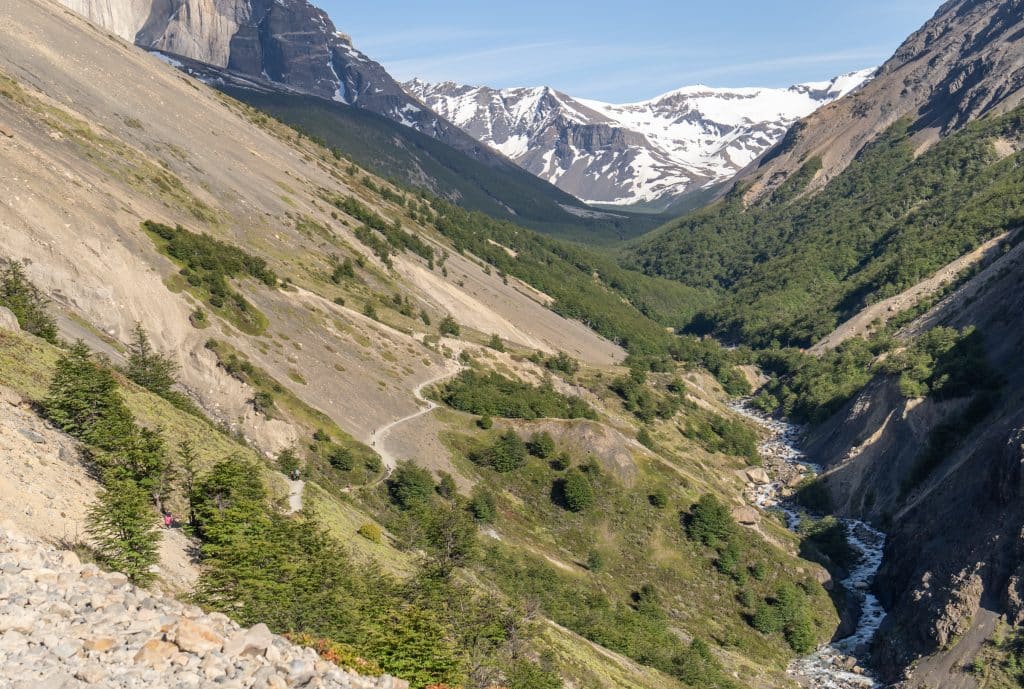
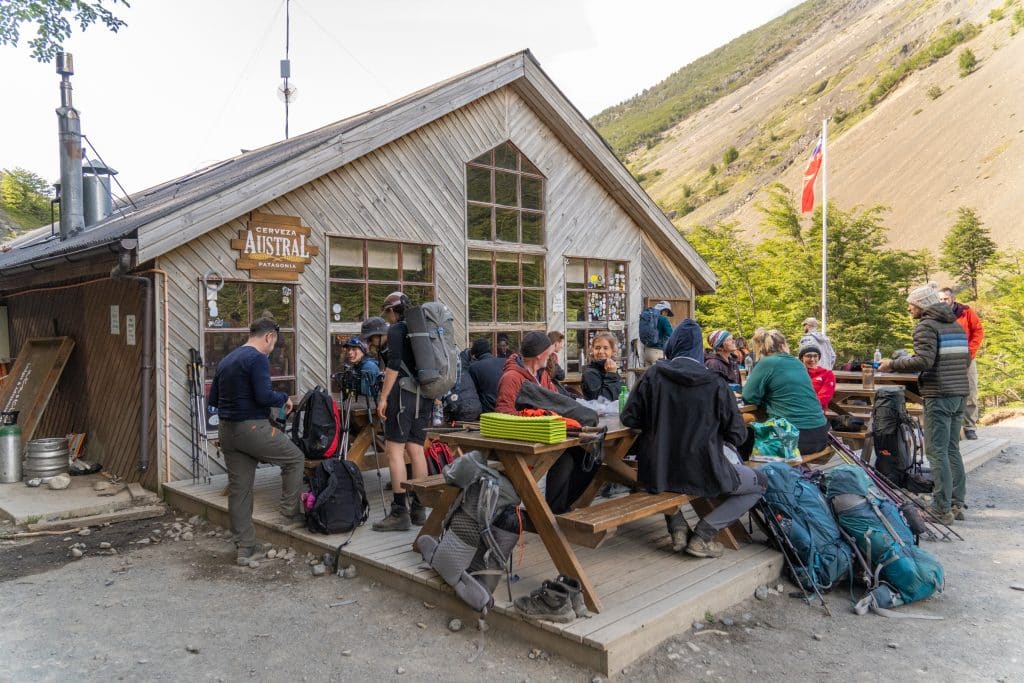
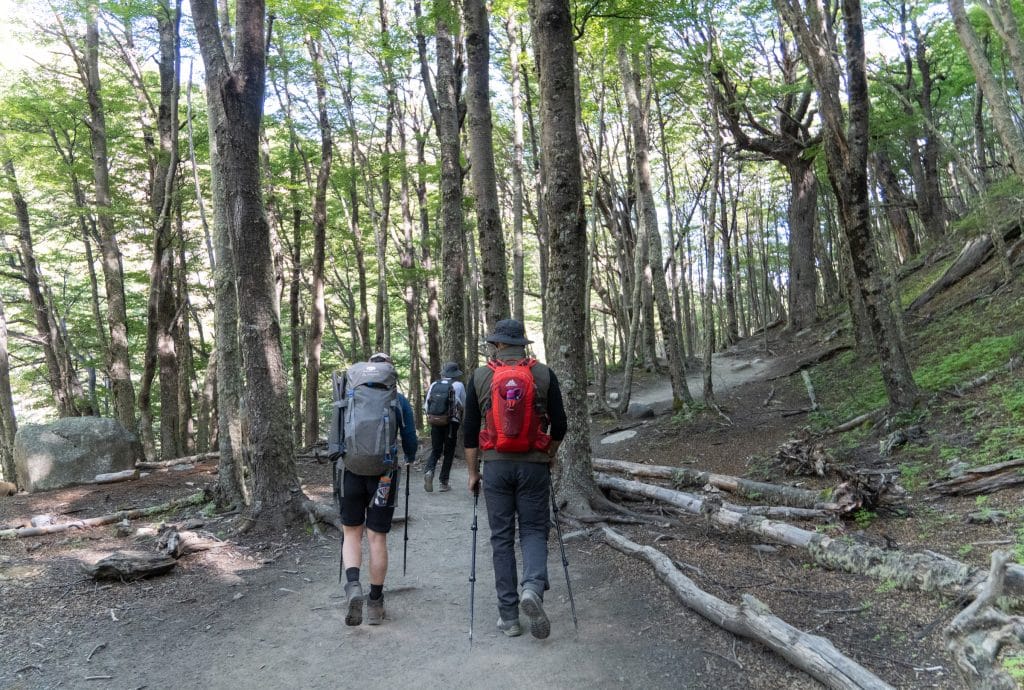
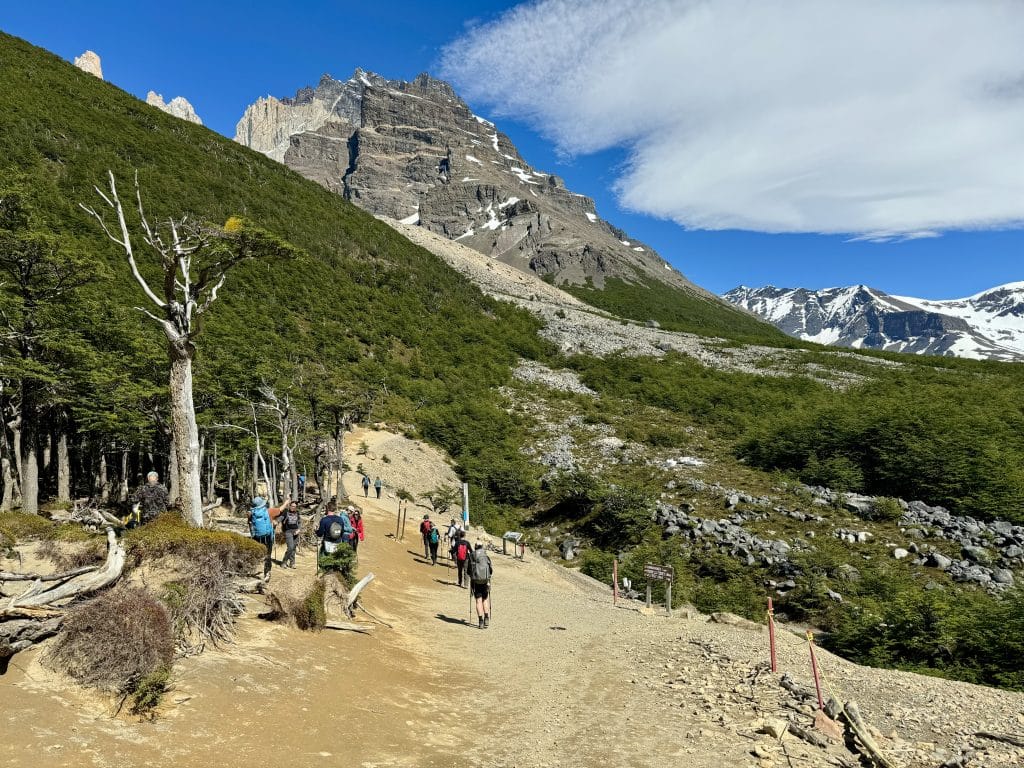
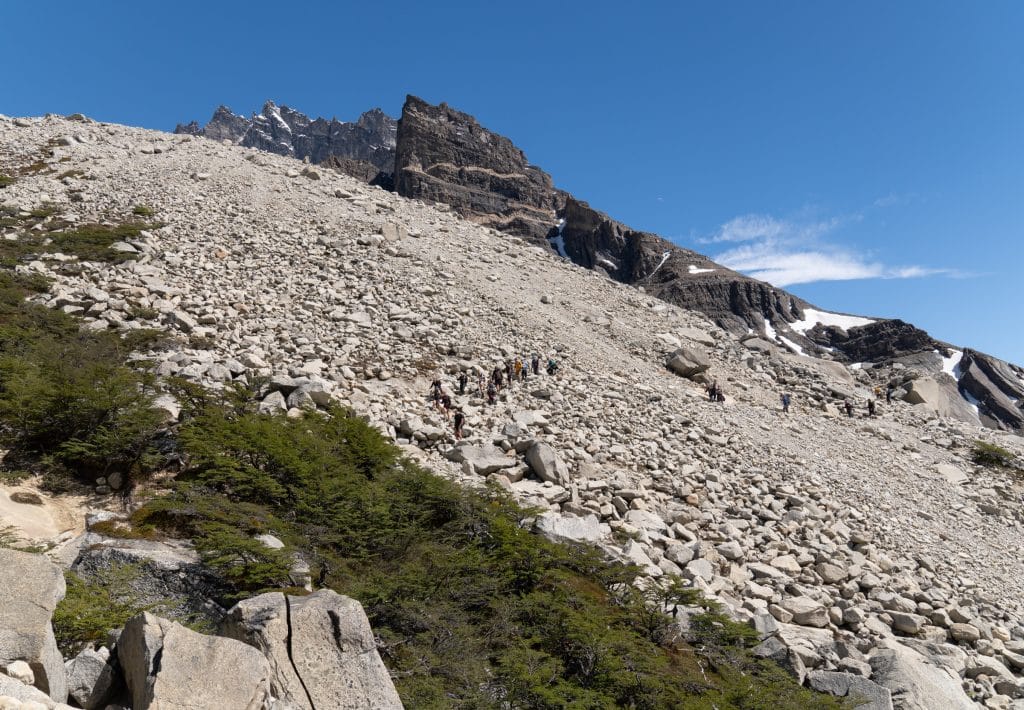
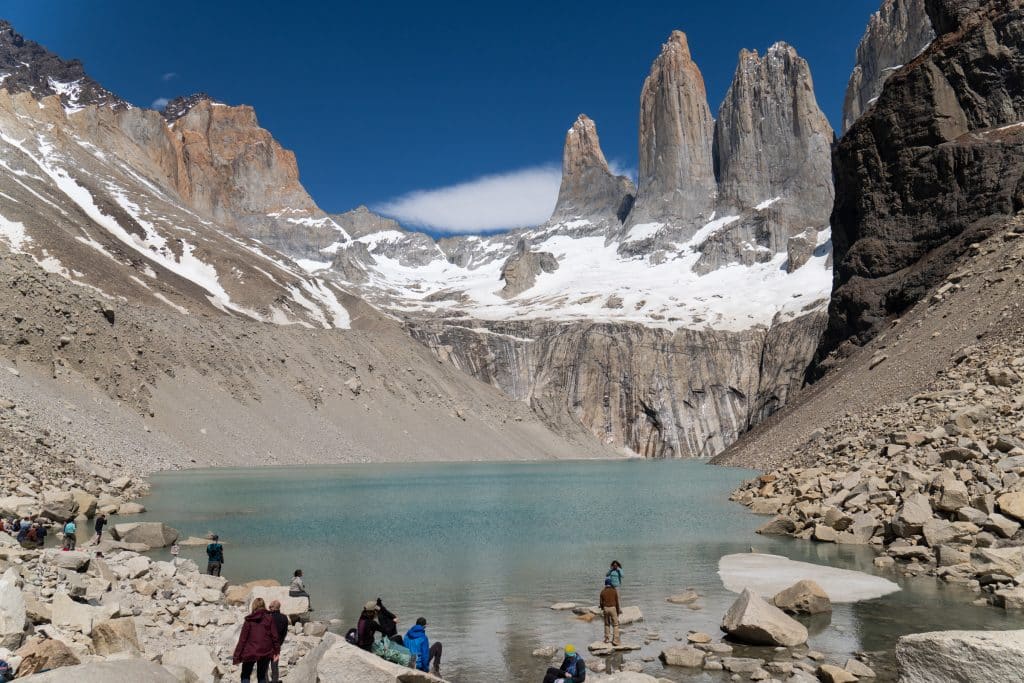
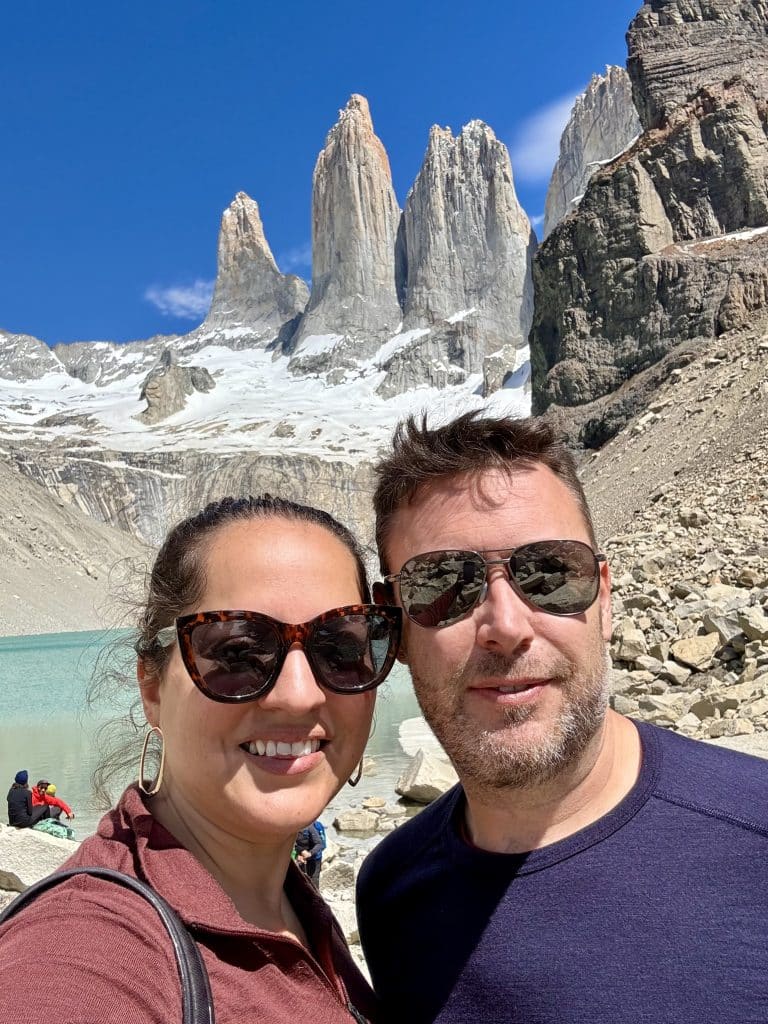
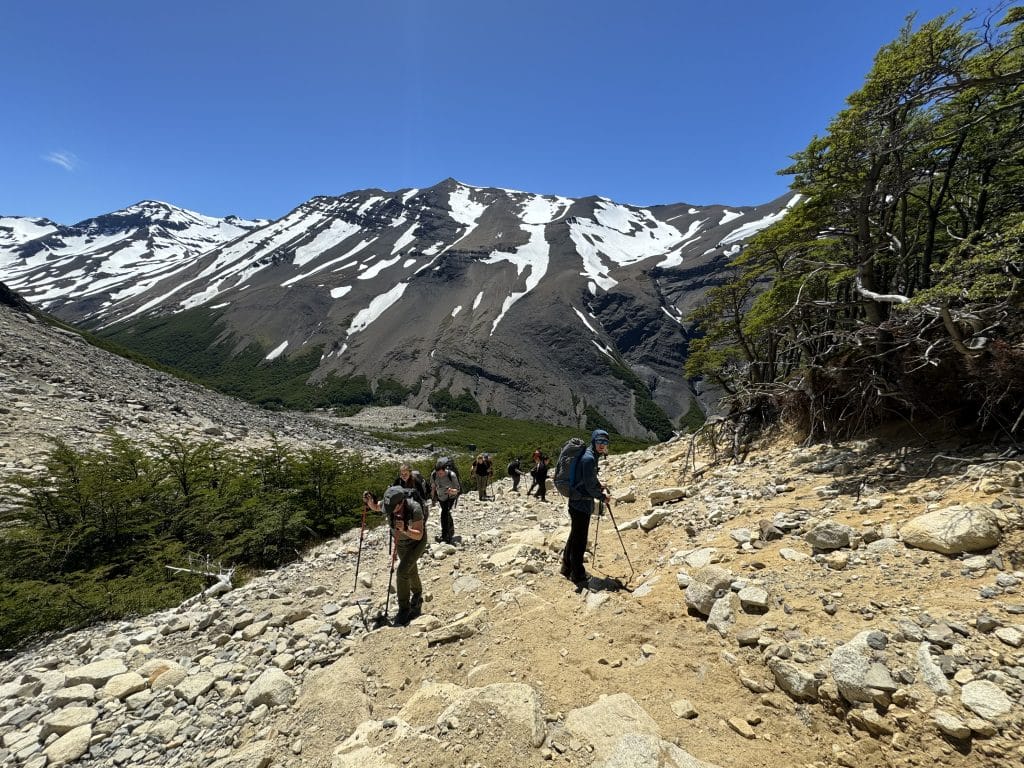
There were two Ecocamp guides with us, and we stayed together as a group for almost the entire hike (even though Charlie and I, while not ridiculously slow, were at the back of the pack).
By the time we hit the refugio on the way back, aka the 75% marker, we split up into two groups and Charlie and I did a slower-paced hike back with our guide Anaïs. This was the point where my feet and knees really started to hurt.
Still, despite being the slow ones, the hike altogether took us about nine hours.
Overall, am I happy I did the Torres hike? Yes. I’m grateful for the experience, and proud of myself and Charlie for surviving it. But only in retrospect. It was really tough at the time, and if I had been in worse shape, it could have been miserable.
If you’re on the fence about the Torres hike, talk to your guides about whether or not you should do it. They are expert guides and they won’t force you to do something beyond your ability.
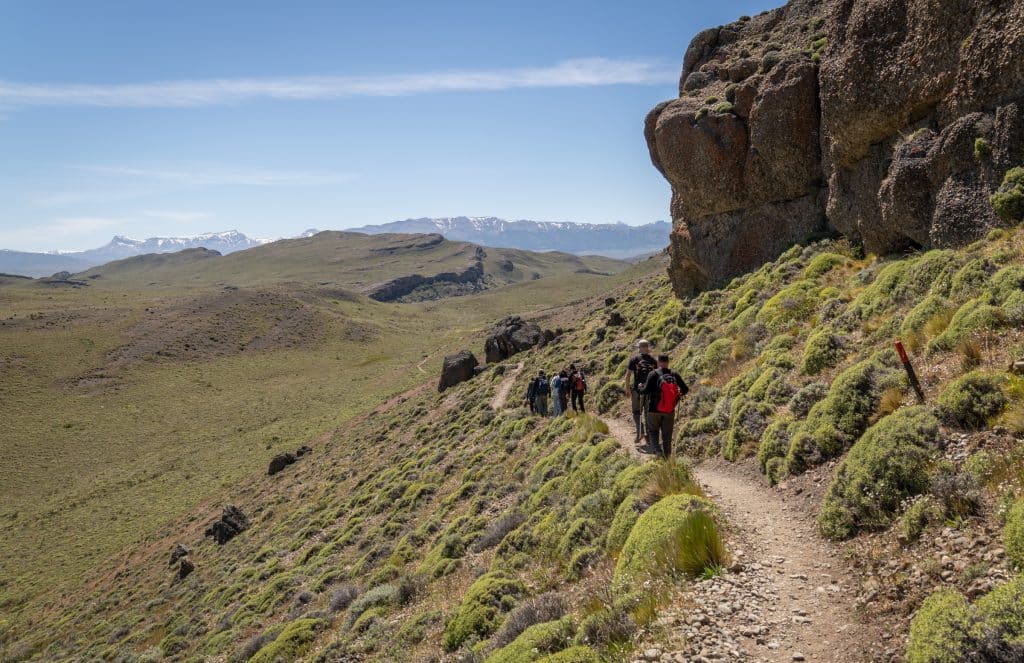
Fauna Trail
This was another “easy” excursion from Ecocamp, and this low-key hike was the perfect recovery day after the intense Torres hike. Altogether we hiked for just a few hours across “Patagonian flat” landscapes (gentle up and down).
Throughout the hike we stopped frequently to learn about the native flora and fauna in the region from our guides. We even visited a rocky overhang with cave paintings dating back more than 6,000 years!
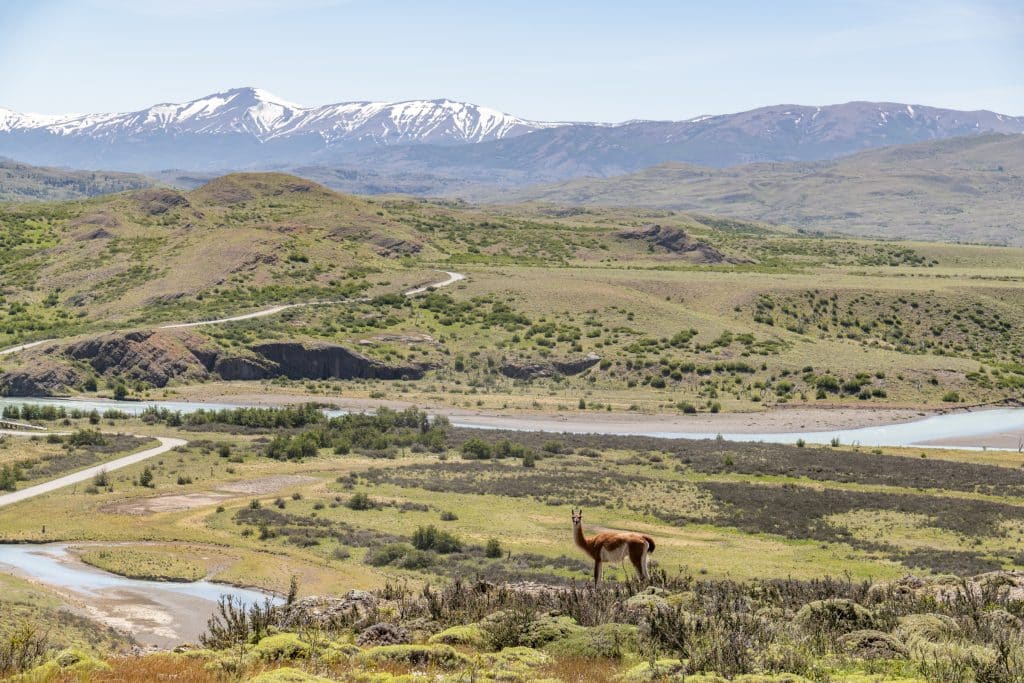
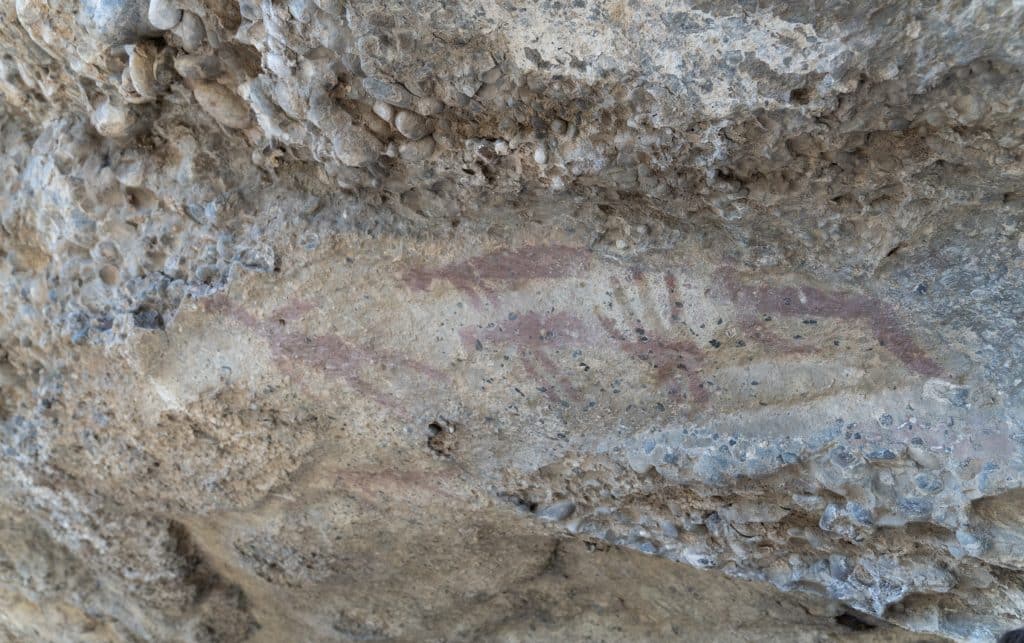
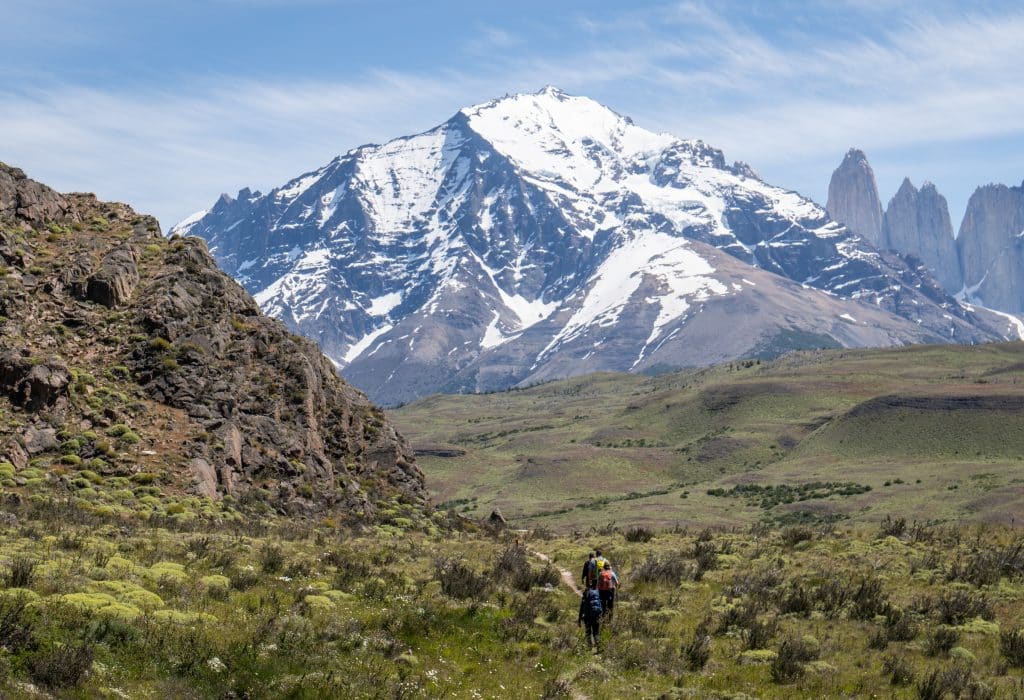
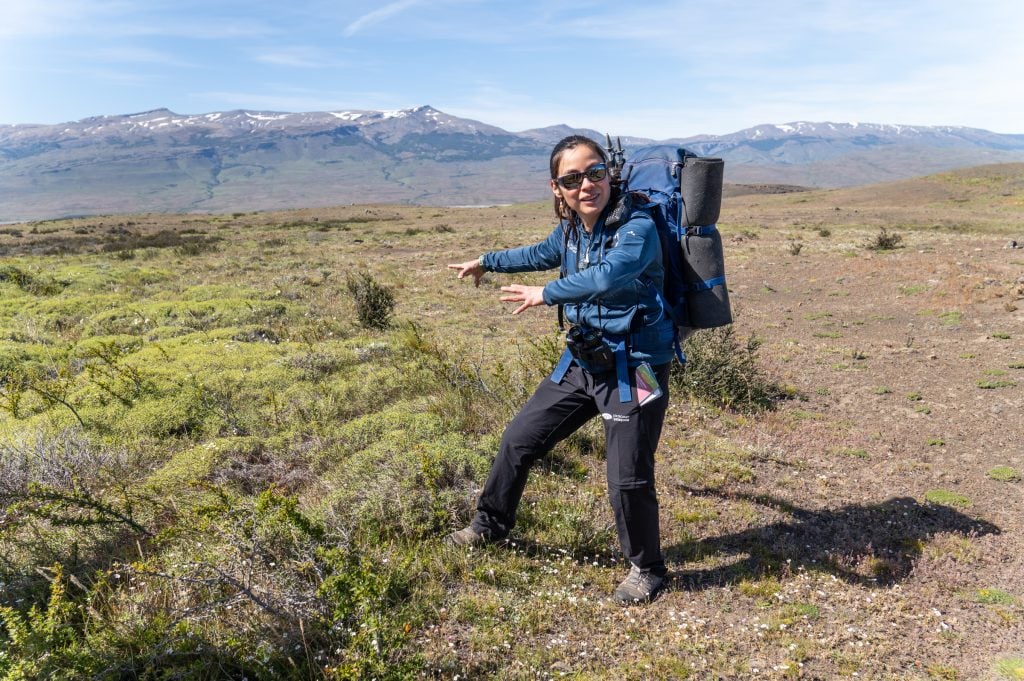
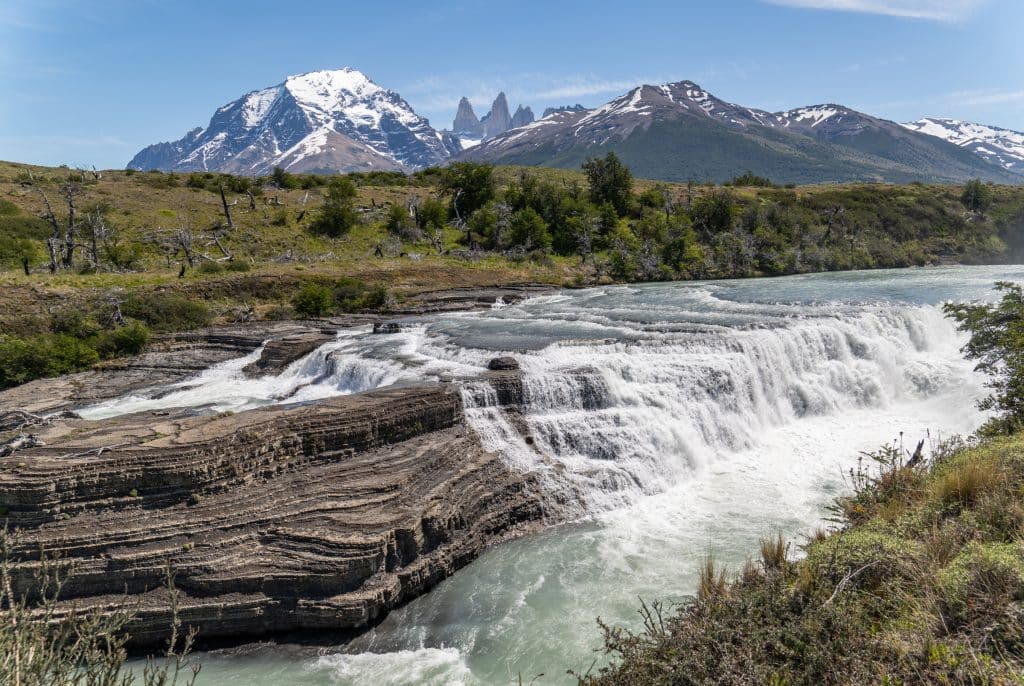
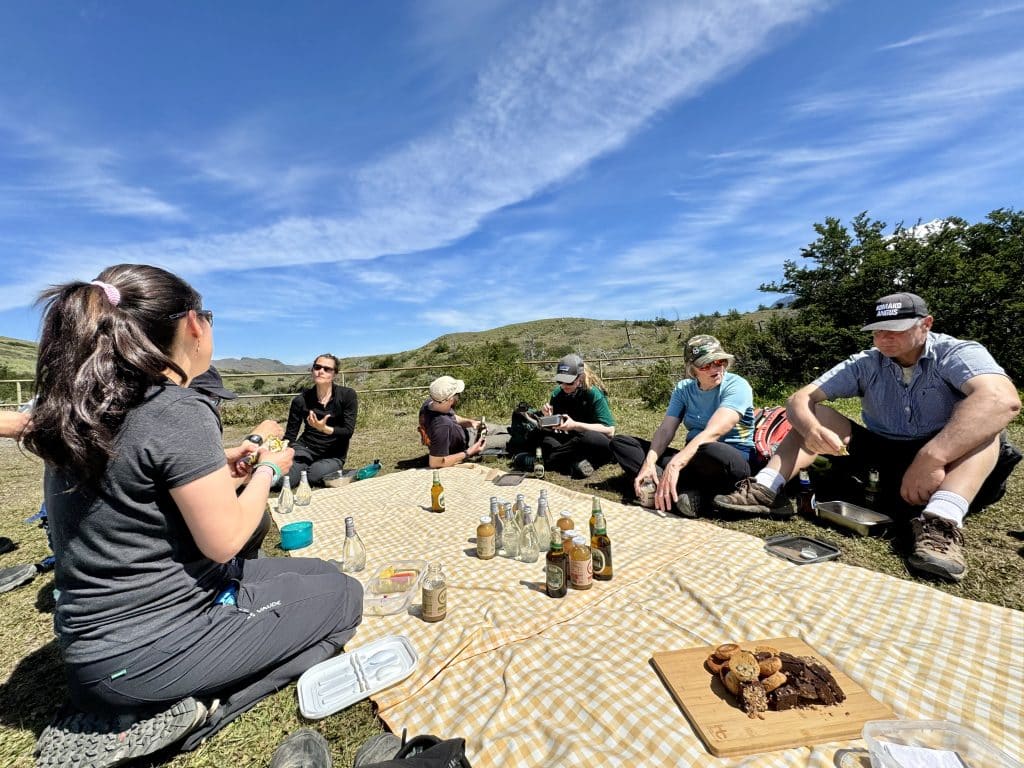
Some of the views on this hike were absolutely stupendous. We saw condors flying overhead, lots of cool ducks, and the guanacos posed for us like they were in a postcard!
After the hike, we drove to Cascada Rio Paine, an enormous waterfall with the towers cheekily peeking out behind it, and enjoyed an impromptu picnic, with tasty snacks and local beers in addition to our packed lunches.
Is the flora hike worth it? I might have been a bit underwhelmed if this was the only hike I did, but it was the PERFECT activity to do the day after an intense hike.
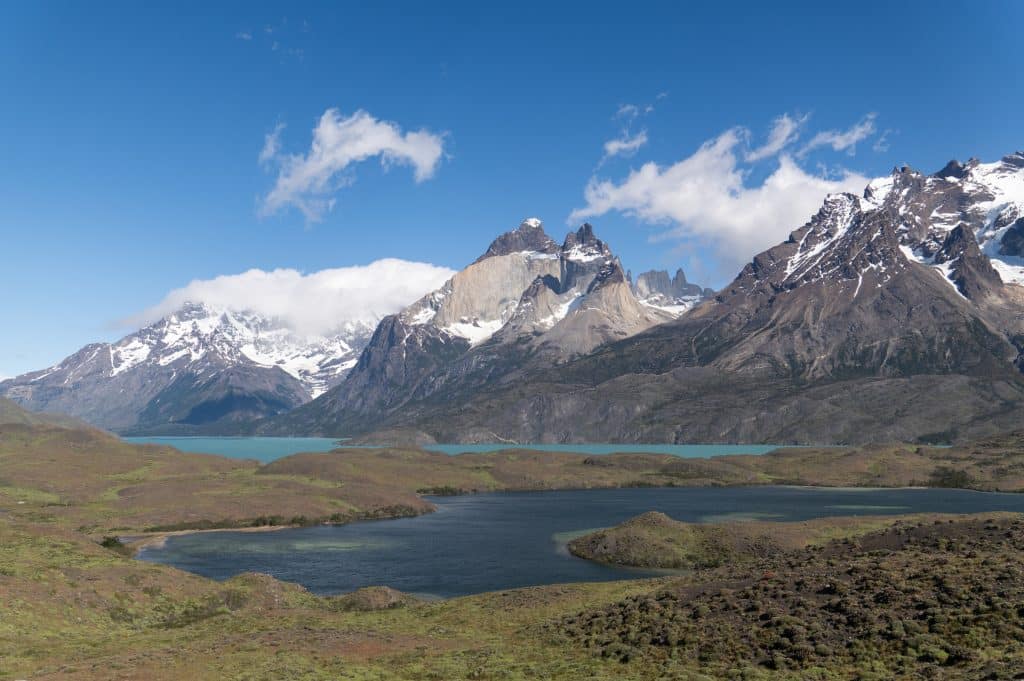
Other Excursions
There are plenty of other excursion options at Ecocamp. You can go horse riding at an estancia (ranch) nearby; you can hike the challenging French Valley or the easy Sarmiento and Sarmiento Chico Lakes. You can track wild horses or even pumas.
And can you choose to not do any excursions? Sure. One girl I met was nursing a mild injury and didn’t want to risk the Towers Base hike. Instead, she had a private yoga session, got a massage, and did a sound bath.
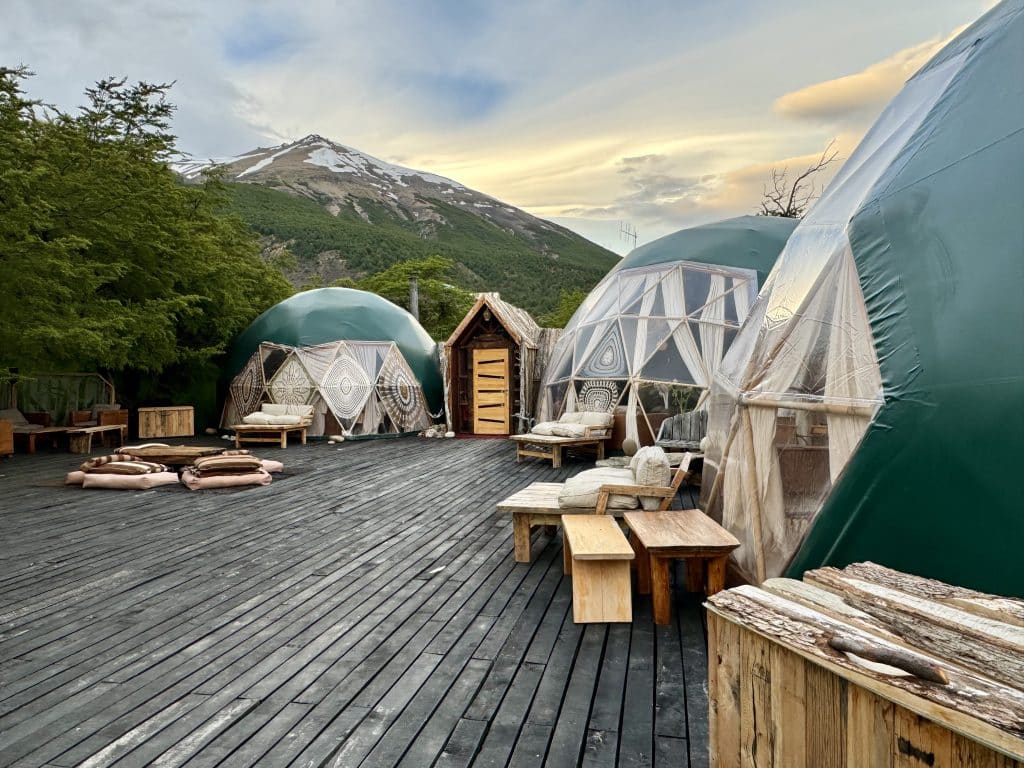
How many days at Ecocamp Patagonia is best?
I stayed at Ecocamp for four nights, which allowed three days of excursions. Honestly, I would recommend that as a minimum.
Ecocamp is not the kind of place where you should rush in and rush out — the magic is getting into the routine, getting to know your guides and fellow travelers, and enjoying the digital detox.
I met some guests who were staying at Ecocamp Patagonia for a week. That would ALSO be an awesome choice. You could combine 5-7 days at Ecocamp with 5-7 days in El Calafate and El Chaltén in Argentina, and that makes a fabulous Patagonia itinerary!
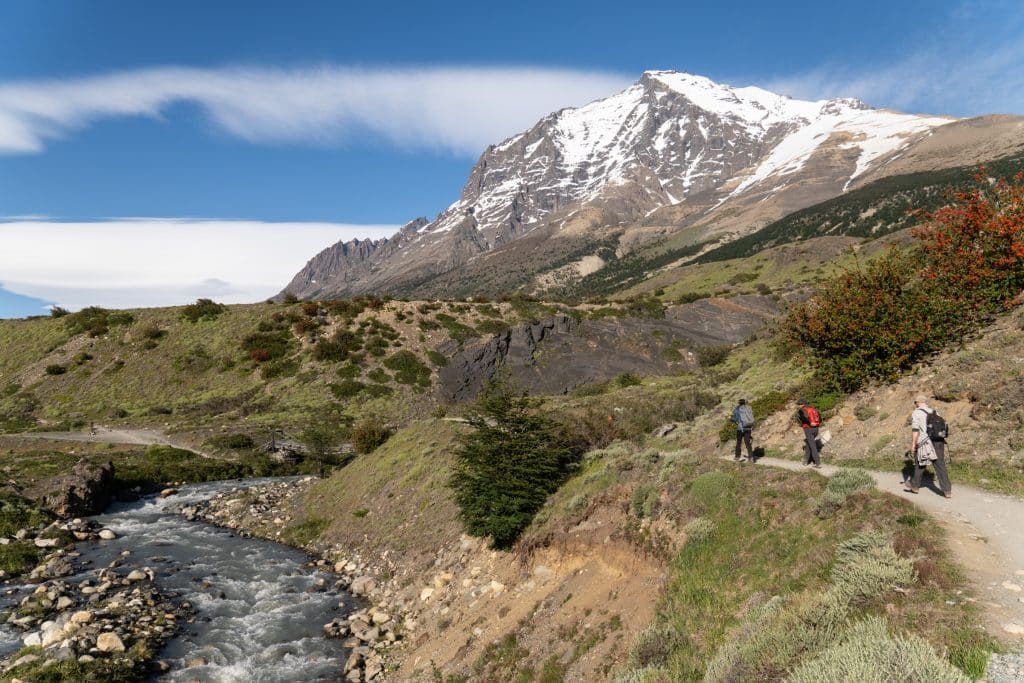
How to get to Ecocamp Patagonia
Ecocamp Patagonia will pick you up from the nearest airports: Puerto Natales (two hours away, with limited flights) and Punta Arenas (four hours away, but with more flight options). They will bring you a box lunch to eat on the journey.
Charlie and I flew into Puerto Natales directly from Puerto Montt (near where we had been staying in Puerto Varas).
Unfortunately, this is where we had a snafu: Ecocamp was not there to pick us up. After nobody showed up, we called the office and they said the van was late. From what they said, this appears to be a rare occurrence, but I really wish they had emailed or texted us to let us know.
If you’re traveling onward to Argentine Patagonia, you have only two options: an early morning lift to the bus station in Torres del Paine National Park (think around 6:00 AM), where you can take a bus to the Argentine border and another bus to El Calafate, or you can book a private transfer that takes you the whole way.
Charlie and I booked a private transfer to El Calafate, and the price was incredibly high (around $800 USD). From El Calafate, you can take a bus to El Chaltén, or fly to Buenos Aires or Ushuaia.
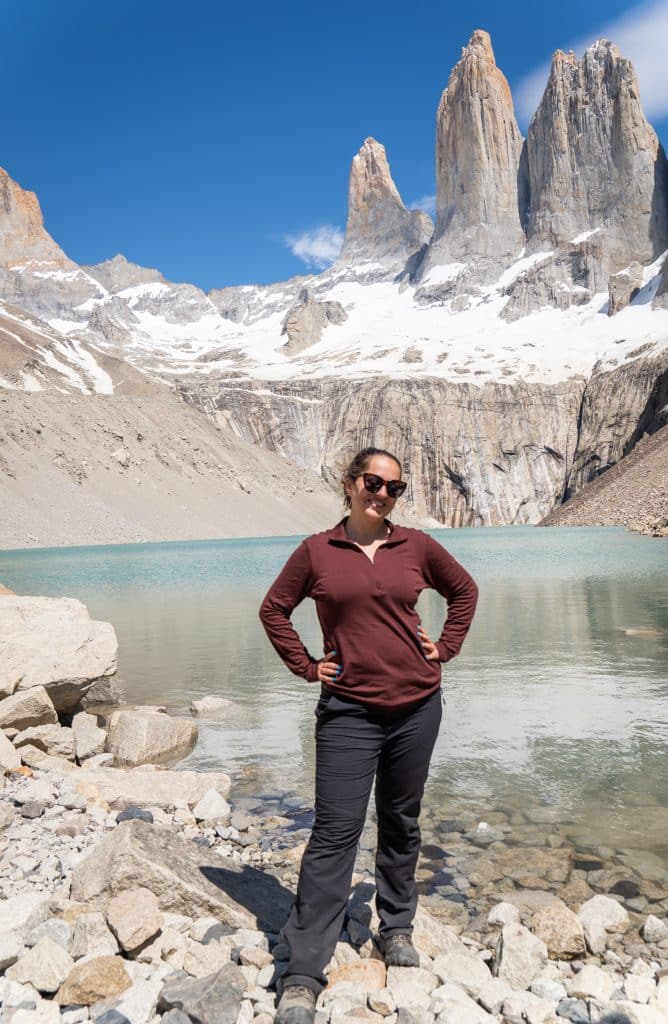
Kate’s Tips for Ecocamp
If you’re planning on visiting Ecocamp, here are a few tips I have:
Pack the right hiking gear. What do you need?
- Real hiking boots, ideally waterproof boots, not sneakers or trail runners
- A lightweight down jacket and a waterproof shell to wear on top
- Hiking pants (two pairs, in case one gets muddy)
- Base layers (I love the Uniqlo heattech top and leggings) — three of each is good
- A hat with a brim, sunglasses, and biodegradable sunscreen
- Gloves, scarf, and warm hat
- Reusable water bottle
You don’t need to bring hiking poles — Ecocamp provides those.
Read through the excursions on the website before your trip, and choose them tentatively in advance. I find it easier to retain information from reading rather than listening, and some of the Ecocamp guides, though lovely, went on long tangents about minutiae of the tours rather than sticking to basic information like the difficulty of the hiking.
Get to breakfast a few minutes early, and pack your lunch first. We got this tip and it was super helpful! So nice to make your lunch before it gets crowded.
If you want a massage, schedule one in advance. The slots go quickly, and if you have a longer excursion, you may only be able to make the final slot of the day.
See if you can fly into Puerto Natales. This will save you two hours of driving rather than flying into Punta Arenas.
Bring a sleep mask. This will help you sleep when the sun rises at 5:30 AM!
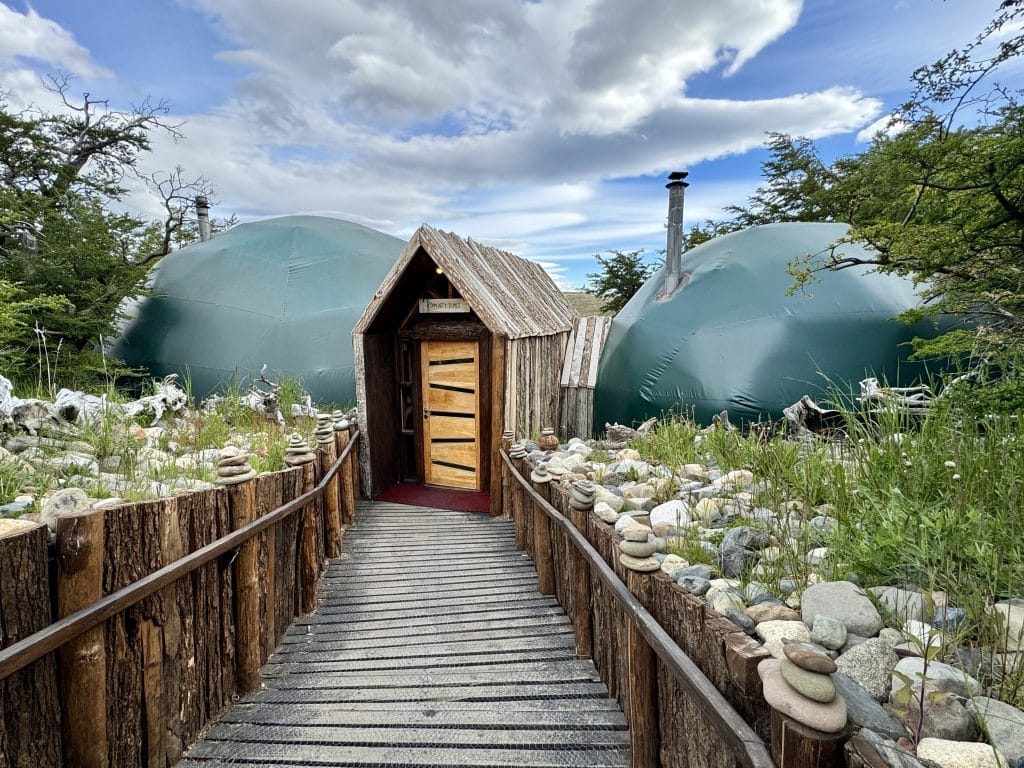
Is Ecocamp Patagonia worth it?
I think Ecocamp Patagonia is immensely worth it. This is the best place Charlie and I stayed on our monthlong South American honeymoon, and we’ve been talking it up to everyone we’ve met since.
The good: This is an incredibly special property that makes you feel like you’re experiencing something unique and memorable in the middle of spectacular nature. They take sustainability seriously. The food is great. And the staff are absolutely fantastic.
What could be improved: Communication with guests over pickup delays. I wish we had received a “We’ll be there in 30 minutes” email or WhatsApp. That, and I found it hard to schedule in the eco-tour and a massage when so many excursions ran late. Some guides were not as clear as others when explaining the excursions. I think having rentable sleep masks would be a great idea.
Value for money: When you factor in that this is an all-inclusive resort — frankly, you won’t spend money on anything besides cocktails in the bar, massages, or gear in the shop — I think the value is extremely high. You get a unique place to stay, three excellent meals per day, and a full excursion each day with transportation and knowledgeable guides — plus free pickup and drop-off at nearby airports and bus stations.
Overall, I adored my stay here, and I’m recommending it to everyone planning a Patagonia trip. If you dream of visiting Patagonia someday, this is the kind of place that will give you a trip you’ll remember forever.
More on Patagonia:
- 16 Epic Things to Do in Ushuaia, Argentina
- 25 Epic Things to do in El Calafate, Argentina
- 18 Wild Things to Do in El Chalten, Argentina
- El Calafate or El Chaltén: Which Town In Patagonia Is Better?
More on Chile:
- 26 Fun Things to Do in San Pedro de Atacama, Chile
- 17 Best Things to Do in Santiago, Chile
- 15 Best Things to Do in Puerto Varas, Chile
- 11 Cool Day Trips from Santiago, Chile
- 17 Colorful Things to Do in Valparaíso, Chile
More on South America:
- Solo Female Travel in Colombia: Is it safe?
- What’s it really like to travel to Guyana?
- 32+ Fun Things to Do in Buenos Aires, Argentina
Does Ecocamp Patagonia sound like your kind of place?